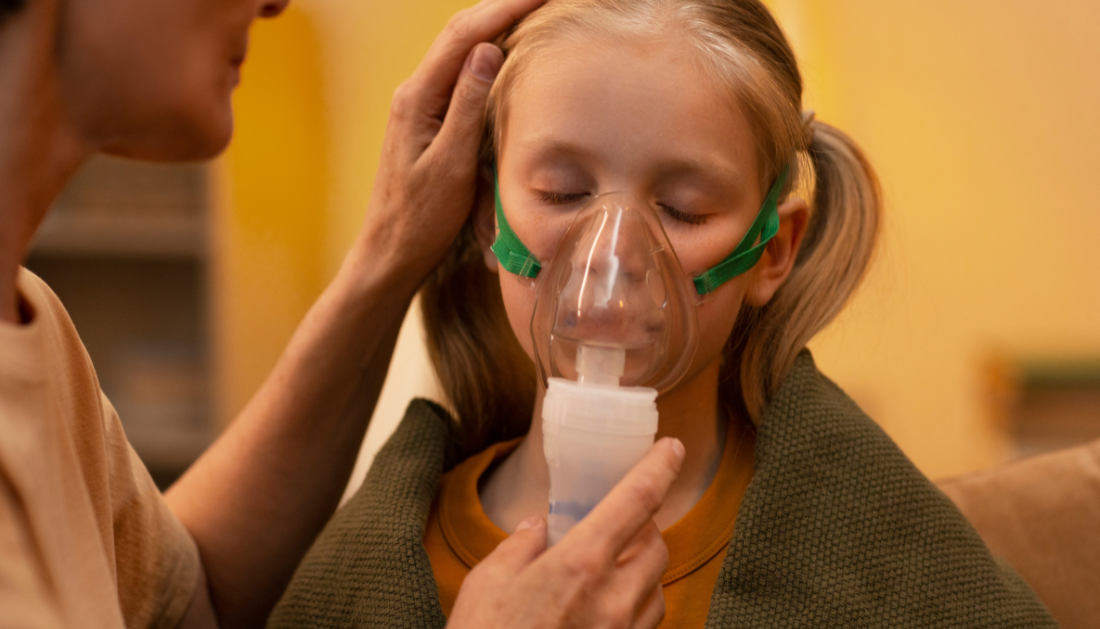

Lower air temperatures have long been associated with pediatric asthma flare-ups in children with the condition, as many parents are aware. However, many others feel left out because there isn’t enough conclusive science to support the connection.
In new research directed by Linchen He, an assistant professor in Lehigh University’s Department of Community and Population Health, Biomarkers are used to help explain the link between oxidative stress, cold weather, and asthma flare-ups.
“Our results suggest that colder temperature exposure may increase oxidative stress in the nasal cavity, which in turn worsens asthma symptoms in children,” he said. “By establishing an understanding of this pathway and an associated biomarker, these results pave the way for future research on how to effectively devise personalized pediatric asthma management strategies.”
The study has been published in Pediatric Research.
Throughout four visits spaced two weeks apart, his team’s research involved 43 children with asthma between the ages of 5 and 13. At every visit, they took samples of saliva, urine, and nose fluid, and they analyzed the samples for oxidative stress indicators.
Damage to cells, proteins, and DNA results from oxidative stress, which is caused by an imbalance in the body’s levels of free radicals and antioxidants. The researchers measured a well-known biomarker of oxidative stress, malondialdehyde (MDA), in the samples.
As a result of free radicals attacking the lipids in cell membranes, the body releases MDA. Membranes degrade due to these attacks, releasing MDA into physiological fluids like nasal, salivary, and urine. Increased oxidative stress in the mouth cavity, circulatory system, and nasal cavity is thought to be indicated by elevated levels of salivary, urine, and nasal MDA, respectively.
These measurements were compared to the Childhood Asthma Control Test (CACT) results for the children’s asthma symptoms. Clinicians frequently utilize the Childhood Asthma Complications Test (CACT), which is based on the children’s self-reporting of symptoms as well as those of their caregivers, to assess how well a child’s asthma is managed.
Data from periods when outdoor temperatures varied from 7 to 18°C (mid-40s to mid-60s°F) were examined by the researchers. Throughout the time, there was a strong correlation between a 2°C (3.6°F) decline in temperature and greater nasal (47–77%) and urine (6-24%) MDA concentrations.
These results are consistent with a previous study that discovered exposure to lower temperatures may harm the nasal lining, leading to increased inflammation and lowered resistance to pathogenic bacteria and viruses. A greater level of nasal oxidative stress may result from the nasal cavity’s increased inflammatory response, which may release free radicals that harm proteins and lipids.
Furthermore, based on statistical studies, the researchers found that 14–57% of the correlations between exposure to lower temperatures and poorer child-reported CACT scores were partially mediated, or explained, by nasal MDA. The findings imply that increased levels of oxidative stress within the nasal cavity may cause lower airway mucosal irritation, which in turn may result in respiratory symptoms.
The scientists also noted that the main route via which air contaminants reach the human body is through the nasal cavity. Higher nasal MDA levels were shown to be strongly correlated with higher exposure to air pollutants, according to their earlier research. According to the results of both the earlier and more recent research, nasal MDA is a sensitive biomarker for these asthma triggers.
They cautioned that “more effort is warranted to understand how to effectively incorporate this biomarker into personalized pediatric asthma management strategies.”
He also emphasized that the sample size, unmeasured environmental exposures (such as aeroallergens), and little variation in temperature exposure during the study period limit the applicability of the current study’s findings.
“Further research is recommended to confirm these findings and explore potential mechanisms underlying the association between temperature exposure, oxidative stress, and asthma exacerbation,” He said.
The results mark a significant advancement in our knowledge of pediatric asthma and its management.
For more information: Nasal oxidative stress mediating the effects of colder temperature exposure on pediatric asthma symptoms, Pediatric Research, https://doi.org/10.1038/s41390-024-03196-2
more recommended stories
 Silica Nanomatrix Boosts Dendritic Cell Cancer Therapy
Silica Nanomatrix Boosts Dendritic Cell Cancer TherapyKey Points Summary Researchers developed a.
 Vagus Nerve and Cardiac Aging: New Heart Study
Vagus Nerve and Cardiac Aging: New Heart StudyKey Takeaways for Healthcare Professionals Preserving.
 Cognitive Distraction From Conversation While Driving
Cognitive Distraction From Conversation While DrivingKey Takeaways (Quick Summary) Talking, not.
 Fat-Regulating Enzyme Offers New Target for Obesity
Fat-Regulating Enzyme Offers New Target for ObesityKey Highlights (Quick Summary) Researchers identified.
 Spatial Computing Explains How Brain Organizes Cognition
Spatial Computing Explains How Brain Organizes CognitionKey Takeaways (Quick Summary) MIT researchers.
 Gestational Diabetes Risk Identified by Blood Metabolites
Gestational Diabetes Risk Identified by Blood MetabolitesKey Takeaways (Quick Summary for Clinicians).
 Phage Therapy Study Reveals RNA-Based Infection Control
Phage Therapy Study Reveals RNA-Based Infection ControlKey Takeaways (Quick Summary) Researchers uncovered.
 Pelvic Floor Disorders: Treatable Yet Often Ignored
Pelvic Floor Disorders: Treatable Yet Often IgnoredKey Takeaways (Quick Summary) Pelvic floor.
 Urine-Based microRNA Aging Clock Predicts Biological Age
Urine-Based microRNA Aging Clock Predicts Biological AgeKey Takeaways (Quick Summary) Researchers developed.
 Circadian Control of Neutrophils in Myocardial Infarction
Circadian Control of Neutrophils in Myocardial InfarctionKey Takeaways for HCPs Neutrophil activity.

Leave a Comment